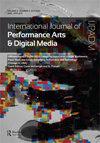扩展澳大利亚中间剧院:走向可持续表演创作和复杂视觉剧院巡演的新设计方法
IF 0.9
0 THEATER
International Journal of Performance Arts and Digital Media
Pub Date : 2022-05-04
DOI:10.1080/14794713.2022.2099052
引用次数: 0
摘要
澳大利亚中级剧院面临着越来越大的压力,既要适应国家规模带来的复杂地理挑战,又要同时应对全球气候危机。澳大利亚戏剧制作人和学者之间正在进行的研究试图解决这些多方面的问题,结合定性和实践主导的方法,努力产生一个新的框架,以支持创建可持续的、可参观的中间剧院。我们认为这个框架的关键在于舞台设计中“规模”的新概念——生产能力在不需要改变原始设计的情况下收缩和扩展到周围环境,在整个生命周期中保持物理和听觉上的灵活性。本文介绍了我们多年研究的初步发现,也是迈向最终框架的第一步:一种基于规模概念的新设计方法,旨在将中间实践转向更可持续、更灵活的复杂技术剧院巡演模式。本文以表演性场景模型的持续讨论为背景,以技术作为气候危机解决方案的实用主义观点为基础,分享了Dead Puppet Society的Ishmael(2021)中出现的新兴设计方法及其对场景过程和产品的影响。本文章由计算机程序翻译,如有差异,请以英文原文为准。
Scaling Australian intermedial theatre: towards a new design methodology for sustainable performance creation and touring of complex visual theatre
ABSTRACT Australian intermedial theatre is facing mounting pressure to adapt to complex geographical challenges posed by the country’s size while simultaneously responding to the global climate crisis. Ongoing research between Australian theatre makers and academics seeks to address these manifold concerns, combining qualitative and practice-led approaches in an effort to produce a new framework to support the creation of sustainable, tourable intermedial theatre. We suggest the key to this framework lies in a new conception of ‘scale’ in scenography – the capacity of a production to contract and expand to its surroundings without the need for change in the original design, to be physically and aurally flexible throughout its lifespan. This article presents the initial findings from our multi-year research, and the first step towards the final framework: a new design methodology, grounded in the notion of scale, designed to shift intermedial practice towards a more sustainable, flexible model of touring complex technical theatre. Contextualised by ongoing discussions of the performative scenographic model and grounded in a pragmatic view of technology as solution to the climate crisis, this article shares the nascent design methodology that emerged from Dead Puppet Society’s Ishmael (2021) and its impact on scenographic process and product.
求助全文
通过发布文献求助,成功后即可免费获取论文全文。
去求助
来源期刊

International Journal of Performance Arts and Digital Media
Arts and Humanities-Visual Arts and Performing Arts
CiteScore
1.70
自引率
0.00%
发文量
29
 求助内容:
求助内容: 应助结果提醒方式:
应助结果提醒方式:


